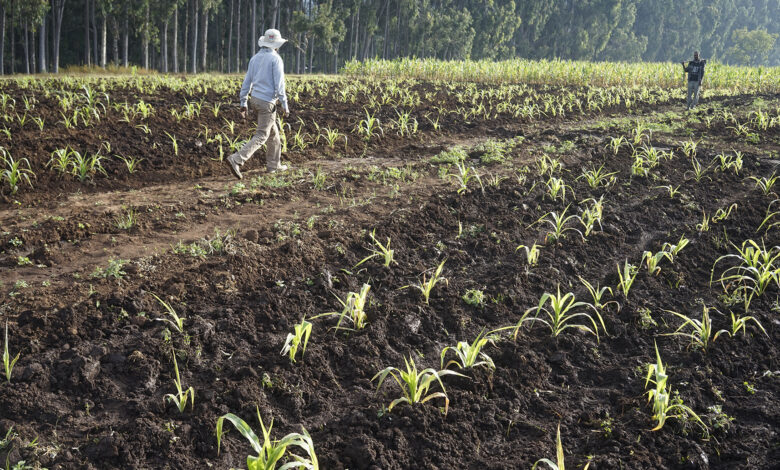Use lime to tame soil acidity, farmers urged

The government and agriculture stakeholders have recommended the use of lime, organic materials, phosphate and engage in careful choice and application of fertilisers to tame high soil acidity in some parts of the country.
During the launch of a new report dubbed the report Soil Acidity and Liming Handbook for Kenya mid this week, the agriculture actors argued that managing soil acidity is critical to increasing soil fertility and the supply of plant nutrients.
Agriculture Cabinet Secretary Mithika Linturi said the sector actors need to promote effective liming practices and targeted interventions to uplift the agricultural landscape and ensure a more sustainable future for farmers in the country.
“To address acidity, the use of lime is encouraged. The imperative role of soil health in bolstering crop yields underscores the necessity of comprehensive knowledge dissemination among farmers,” he said in a speech read on his behalf by Gilbert Muthee, director of agri-business at a Nairobi hotel.
Linturi added the government plans to fast-track efforts towards the creation of a national action plan to rehabilitate acidic soils with a view to increasing food and nutrition security.
Strategic research is needed to develop and promote liming in addition to integrated crop, soil, water, and soil fertility management practices for acidic soils.
Budgetary allocation
This is over and above the government increasing budgetary allocation to support agricultural research, development and knowledge dissemination that address soil acidity. “There is a need for financing and offering credit facilities to farmers for lime procurement, distribution and use. There is also a need for a national assessment of the benefits of liming agricultural soils in Kenya,” the report states
It adds that the government should put together new regulations as part of a comprehensive policy framework for regulating lime use and application and aligns with the current global limning trends.
The report compiled by a consortium of local and international researchers revealed that currently, 13 per cent of Kenya’s soils are acidic, which accounts to 7.5 million hectares or 63 per cent of Kenyan arable land.
Linturi said soil acidity is a significant constraint to crop productivity in the tropics, adding that most core nutrients become available in highly acidic soils, resulting in low productivity.
Declining crop yields, he warned, pose a serious threat to the food and nutritional security, incomes and livelihoods of millions. “Soil acidity emerges as a pressing obstacle, affecting a substantial portion of Kenya’s arable land and consequently jeopardising food and nutrition security and income stability for many,” added Linturi.
The report notes that high soil acidity levels are concentrated in main food baskets of Kenya -Central, Western and Rift Valley regions.
In addition, high soil sourness is also high in some parts of the Eastern and Coastal region where the degree of acidity is extreme at less than 4.5.
Anthony Esilaba, one of the authors of the report noted that farmers and other agriculture players have continued to apply fertiliser and ignored lime which is a key nutrient to treat high soil acidity.
“Key causes of soil acidity include, leaching of bases by heavy rainfall, organic matter decay, continuous application of acidifying fertilizers, uptake of nutrients by plants and removal, soil erosion, acid rain and acid sulphate soils,” he said.







